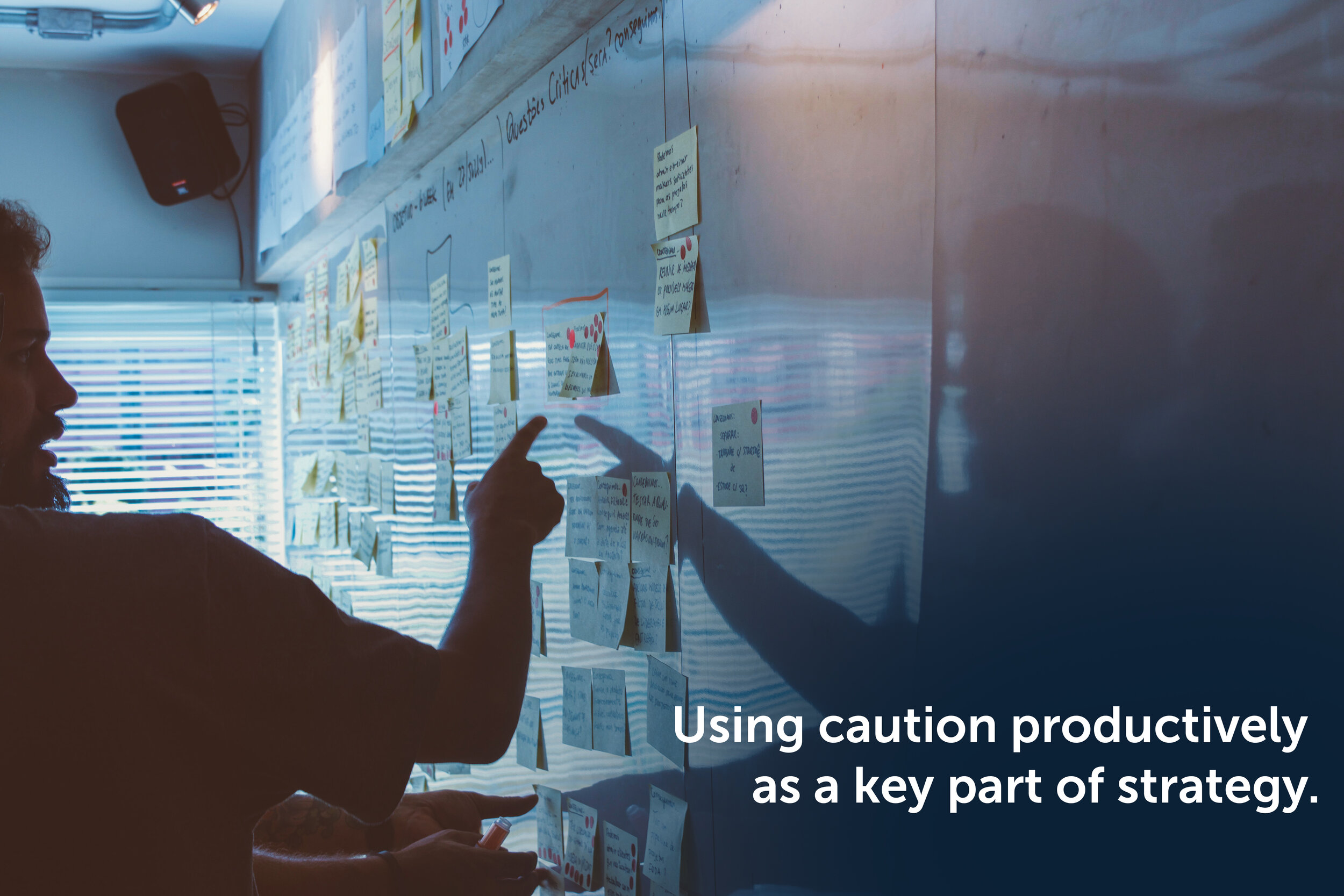Undoubtedly, the pandemic and other various economic shocks have been leaving CEOs apprehensive and stressed about running their businesses. On the other end of the spectrum, with the vaccine rollout, economists are expecting the economy to take off this year. Considering these extremes and uncertainty, it can be challenging to make business decisions. We don’t want to miss out on opportunities that inherently involve risk, but we also don’t want to shut down due to a series of bad decisions. As we move forward, the question on many business owners’ minds is: how much caution should I use when making business decisions?
We know, as this past year pointed out, that we should be fairly cautious. Before the pandemic, the economy was doing well – unemployment was at record lows and there was increased household wealth and spending. As we know, when Covid hit our shores, that growth was reversed, the stock market tanked and unemployment skyrocketed. For many industries, the market froze, people couldn’t come in to stores to do their shopping, or supply chains were disrupted. We know from this past year that we should exercise a fair amount of caution to prepare for catastrophic events.
So, we know that, as business leaders, we should exercise a fair amount of caution. This seems obvious. Perhaps a more helpful and revealing question than the one above would be: how should I exercise caution in running my business?
The first question - how much caution – uses caution as a limiter in strategic decisions. It asks confident we can expect to be in our environment – and if we can’t be confident, makes decisions accordingly. This is fundamentally a fair question to ask – we should consider our environment and making decisions accordingly. It is especially relevant considering we are entering into an age where technological, social, political, ecological, and economic disruption will be common. The second question – how should I exercise caution - uses caution productively as a key part of strategy. It is understanding that caution is not just something that limits action that would be taken otherwise, but it is used at the heart of strategy to keep the business alive.
There is a concept from Jim Collins called Productive Paranoia that is useful when making decisions on how to use caution in our business. According to Jim Collins:
Productive Paranoia is a concept developed in the book Great by Choice. The only mistakes you can learn from are the ones you survive. Leaders who stave off decline and navigate turbulence assume that conditions can unexpectedly change, violently and fast. They obsessively ask, What if? By preparing ahead of time, building reserves, preserving a margin of safety, bounding risk, and honing their disciplines in good times and bad, they handle disruptions from a position of strength and flexibility.
Basically, Productive Paranoia identifies how, when things go badly, we can stay in the game.
Consider this example from WWII with Winston Churchill.
When Germany invaded France, Churchill had to strategize how to best help their allies. He needed to send squadrons of men to France to aid them. Even though Churchill entered the battle to help France, Churchill knew that strategically, he needed twenty-five squadrons of men to defend England should France fall and Germany would turn on them next. No matter what happened in France, Churchill was not willing to risk those twenty-five squadrons. As we know now that decision to keep twenty-five squadrons was strategic and spot-on.
The primary question for Churchill wasn’t, “how risky should I be when entering into battle?” He probably asked himself that later, but his primary question was, “what do I need, in case this all goes south, to survive?” His strategy was one that considered what was needed to survive, and made actions involving risk accordingly.
In business, we need to understand what our twenty-five squadrons are – what it is we absolutely need to survive in the event of a crisis, and strategically protect that. That way, we can confidently move in the market when times are good, garnering a greater understanding what we can and can’t risk, and when times are bad, we have what we need to make it through.


